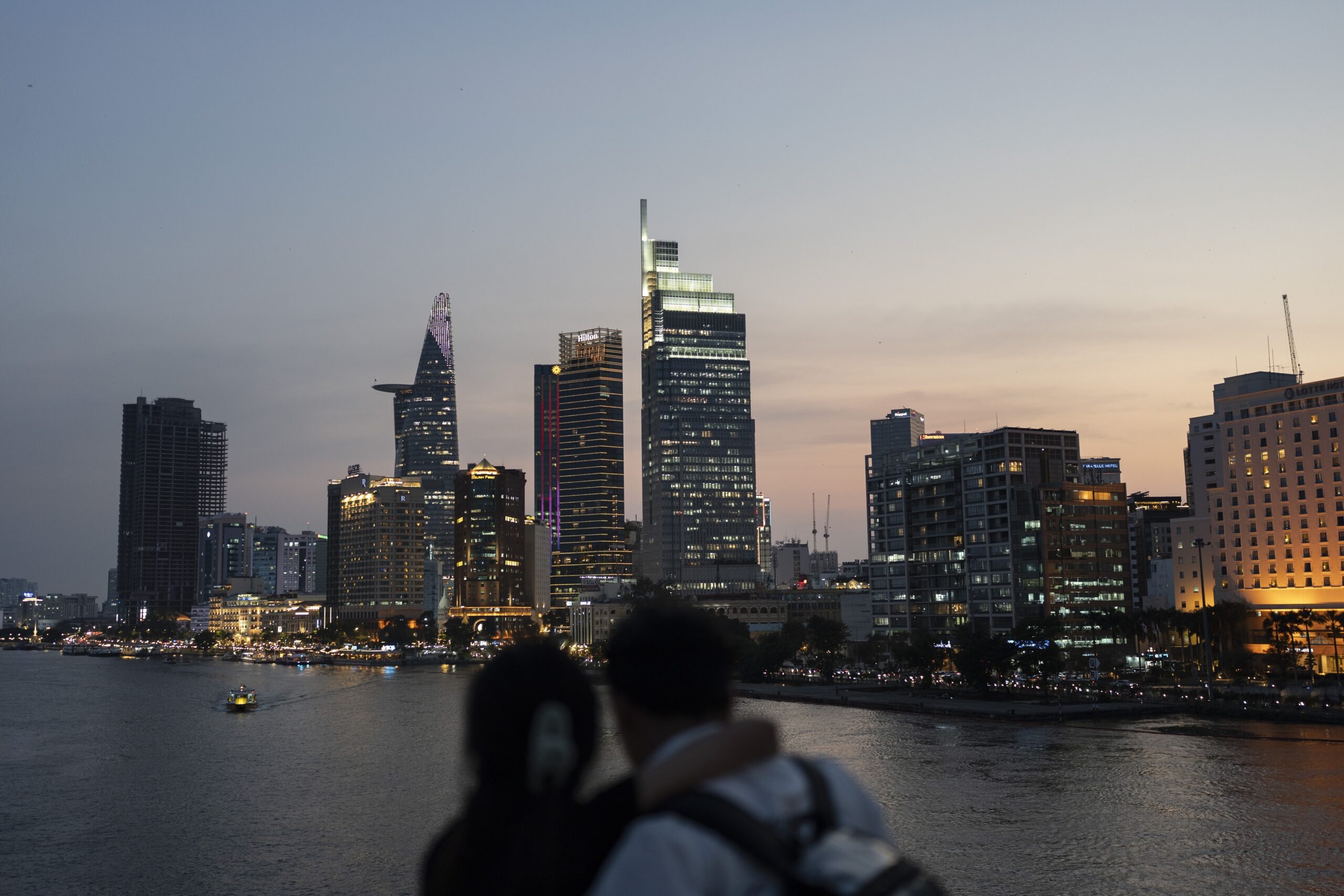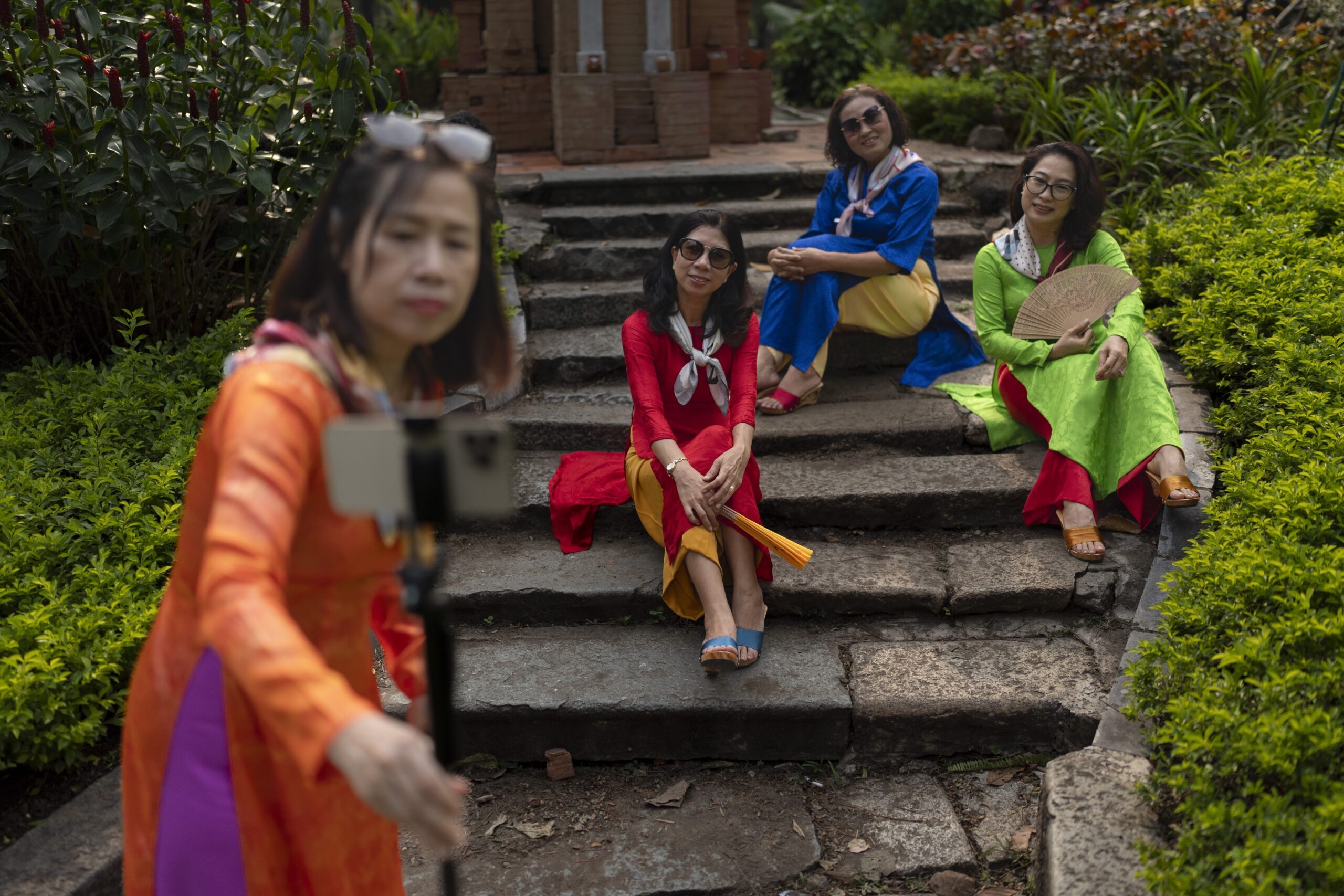
HO CHI MINH CITY, VIETNAM (AP) — From the sky, the sprawling Ho Chi Minh City in southern Vietnam appears to erupt from the green expanse of the riverine delta that surrounds it.
Millions of lives – an estimated 9.3 million in 2023, according to the United Nations World Urbanisation Prospects – intersect in Vietnam’s financial capital. Young couples hold hands and walk by the Saigon River. Thousands perched on scooters wait at traffic lights. Trainee hairstylists give residents free haircuts on the streets.
At parks, friends meet and take group photos, or they may get together for drinks and karaoke. Kids ride electric hoverboards, or they may play da cau, a sport dating back nearly 1,500 years that involves kicking a shuttlecock.

To be a part of this tapestry for millions living in the adjoining Mekong region is viewed as the most reliable way toward economic security. Incomes from traditional jobs like farming or aquaculture aren’t as reliable as they used to be for reasons ranging from saltwater intrusion in farms or the water table being depleted because of climate change or excessive sand mining, said Mimi Vu, a migration specialist based in Ho Chi Minh City.
“Migration because of climate change and because of economic prospects are intertwined. It’s very hard to separate the two,” Vu said.
This movement to Vietnam’s largest city is one reason why its population has nearly doubled in the past two decades despite the city having one of the lowest birth rates in the country. Fears of future labour shortages have prompted the government to design policies encouraging families to have more children.
But that low-lying, concentrated population is more vulnerable to the many climate risks straining the city’s infrastructure, like extreme heat and flooding from rising sea levels.
And the many migrants who earn a living by working on the streets — the thousands that sell street food, push carts of fruit through searingly hot alleys during the day, or work at construction sites — are often the most vulnerable.







